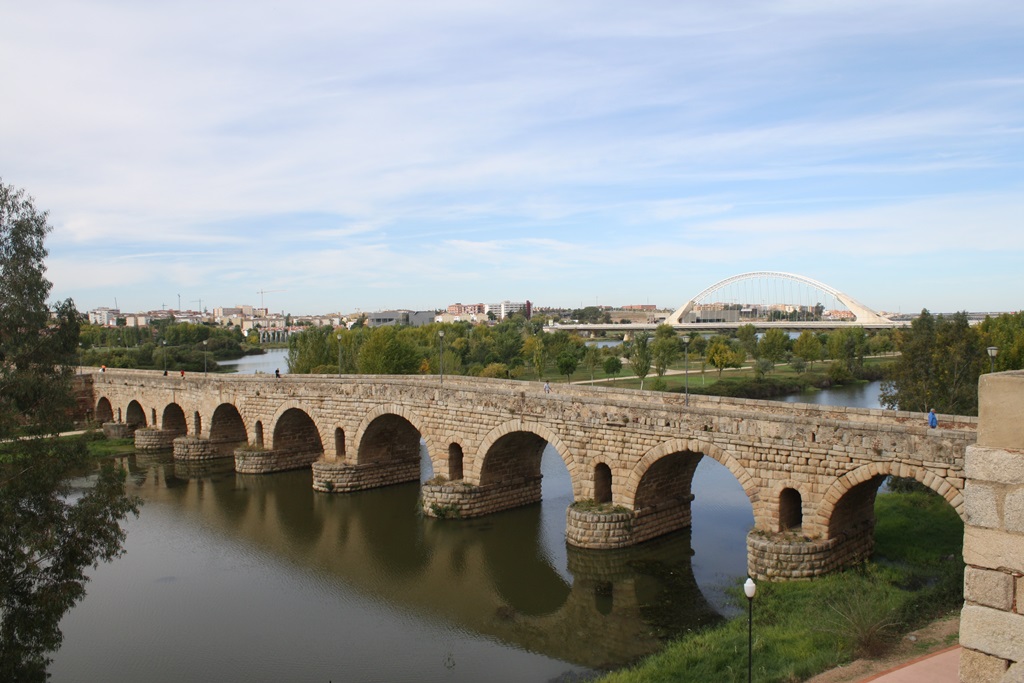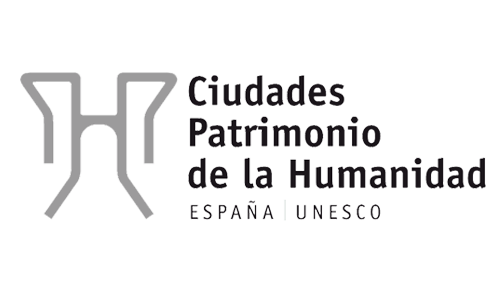Roman Bridge
 The name in Roman times of the river that we now see was the Anas, to which the Arabic prefix Guad, which means river, was subsequently added. This river has a bridge –or “the bridge,” as it was referred to in days gone by– that is one of the longest of ancient times. It is the work that gives meaning to the existence of this city and, because of its strategic value, a crucial element for trade and for all the wars that have had as their stage the western side of the Peninsula.
The name in Roman times of the river that we now see was the Anas, to which the Arabic prefix Guad, which means river, was subsequently added. This river has a bridge –or “the bridge,” as it was referred to in days gone by– that is one of the longest of ancient times. It is the work that gives meaning to the existence of this city and, because of its strategic value, a crucial element for trade and for all the wars that have had as their stage the western side of the Peninsula.
The bridge, a work from the times of the Colony's founding, is built entirely of concrete lined with granite ashlar and is today composed of sixty rounded arches, being nearly eight hundred meters long and twelve meters high at its highest points. The strong pillars on which the arches rest have rounded cutwaters upstream in places that could be more affected by currents. In addition, the piles of these sections are perforated with small arches to act as weirs in order to reduce the resistance to the current brought on by a construction that is as robust as this bridge.
Today, it is one unified piece. Different battles and major flooding of the Guadiana River have done away with some of its stretches, with restorations having been undertaken from the Visigothic period until the nineteenth century, although the most important restoration was carried out in the seventeenth century, when five arches were added to the center section, as well as the corresponding ramps to allow for access to La Isla ("The Island" Park). However, in its original state, it was in reality made up of two bridges joined at La Isla by a large cutwater that, like a big wedge, divided the Guadiana in two. The size of said cutwater was such that, during the times of the Roman colony, a cattle market was held atop it.

The name in Roman times of the river that we now see was the Anas, to which the Arabic prefix Guad, which means river, was subsequently added. This river has a bridge –or “the bridge,” as it was referred to in days gone by– that is one of the longest of ancient times. It is the work that gives meaning to the existence of this city and, because of its strategic value, a crucial element for trade and for all the wars that have had as their stage the western side of the Peninsula.
The bridge, a work from the times of the Colony's founding, is built entirely of concrete lined with granite ashlar and is today composed of sixty rounded arches, being nearly eight hundred meters long and twelve meters high at its highest points. The strong pillars on which the arches rest have rounded cutwaters upstream in places that could be more affected by currents. In addition, the piles of these sections are perforated with small arches to act as weirs in order to reduce the resistance to the current brought on by a construction that is as robust as this bridge.
Today, it is one unified piece. Different battles and major flooding of the Guadiana River have done away with some of its stretches, with restorations having been undertaken from the Visigothic period until the nineteenth century, although the most important restoration was carried out in the seventeenth century, when five arches were added to the center section, as well as the corresponding ramps to allow for access to La Isla ("The Island" Park). However, in its original state, it was in reality made up of two bridges joined at La Isla by a large cutwater that, like a big wedge, divided the Guadiana in two. The size of said cutwater was such that, during the times of the Roman colony, a cattle market was held atop it.
Hours and Fees
Location





